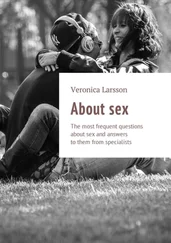Mariana Mazzucato - The Value of Everything - Making and Taking in the Global Economy
Здесь есть возможность читать онлайн «Mariana Mazzucato - The Value of Everything - Making and Taking in the Global Economy» весь текст электронной книги совершенно бесплатно (целиком полную версию без сокращений). В некоторых случаях можно слушать аудио, скачать через торрент в формате fb2 и присутствует краткое содержание. Год выпуска: 2018, ISBN: 2018, Издательство: Penguin Books Ltd, Жанр: economics, на английском языке. Описание произведения, (предисловие) а так же отзывы посетителей доступны на портале библиотеки ЛибКат.
- Название:The Value of Everything: Making and Taking in the Global Economy
- Автор:
- Издательство:Penguin Books Ltd
- Жанр:
- Год:2018
- ISBN:9780241188828
- Рейтинг книги:3 / 5. Голосов: 1
-
Избранное:Добавить в избранное
- Отзывы:
-
Ваша оценка:
- 60
- 1
- 2
- 3
- 4
- 5
The Value of Everything: Making and Taking in the Global Economy: краткое содержание, описание и аннотация
Предлагаем к чтению аннотацию, описание, краткое содержание или предисловие (зависит от того, что написал сам автор книги «The Value of Everything: Making and Taking in the Global Economy»). Если вы не нашли необходимую информацию о книге — напишите в комментариях, мы постараемся отыскать её.
The Value of Everything: Making and Taking in the Global Economy — читать онлайн бесплатно полную книгу (весь текст) целиком
Ниже представлен текст книги, разбитый по страницам. Система сохранения места последней прочитанной страницы, позволяет с удобством читать онлайн бесплатно книгу «The Value of Everything: Making and Taking in the Global Economy», без необходимости каждый раз заново искать на чём Вы остановились. Поставьте закладку, и сможете в любой момент перейти на страницу, на которой закончили чтение.
Интервал:
Закладка:
Petty and King were seminal figures in these early forays into the question of how and where value is created. Yet, ultimately, both could label productive and unproductive occupations however they chose. Their work was purely descriptive. It did not attempt to quantify or model relations between different groups and individuals in the economy, 14or to quantify how the system reproduced itself and maintained the conditions for future production. In short, their work was not linked to an underlying theory of what constitutes wealth and where it comes from: a value theory. Any policy for economic growth was therefore idiosyncratic because it was unclear what generated it. But during the following century, this would start to change.
As the study of economics developed during the course of the eighteenth century, thinkers became increasingly concerned with finding a theory to explain why some nations grew and prospered while others declined. Although the economists of the time did not use the term ‘production boundary’, the idea was at the heart of their work. Their search for the source of value led them to locate it in production, first in land – understandably so, in predominantly agrarian societies – and then, as economies became more industrialized, in labour. The labour theory of value reached its apogee with Karl Marx in the mid-nineteenth century, when the Industrial Revolution was in full swing.
THE PHYSIOCRATS: THE ANSWER LIES IN THE SOIL
The first efforts to find a formal theory of value came in the mid-eighteenth century from the court of Louis XV of France, in the twilight – so it turned out – of that country’s absolute monarchy. There, François Quesnay (1694–1774), often described as the ‘father of economics’, was the king’s physician and adviser. He used his medical training to understand the economy as a ‘metabolic’ system. Crucially, in metabolism, everything must come from somewhere and go somewhere – and that, for Quesnay, included wealth. Quesnay’s approach led him to formulate the first systematic theory of value that classified who is and is not productive in an economy, and to model how the entire economy could reproduce itself from the value generated by a small group of its members. In his seminal work Tableau Économique , published in 1758, he constructed an ‘economic table’ which showed how new value was created and circulated in the economy. In it he continued the metabolic analogy: pumps were drawn to signify the ways in which new value was introduced, and outgoing tubes illustrated how value left the system.
At the time Quesnay wrote, French society was already facing the problems that would lead to the French Revolution fifteen years after his death. French agriculture was in a bad state. Farmers were choked by high taxes, imposed by their usually noble landlords to fund their lavish lifestyles and by central government to finance war and trade. Adding to this burden, the French government’s mercantilist policy, faced with a now aggressively expanding Britain, kept the prices of agricultural produce low to provide cheap subsistence to domestic manufactures, which could in turn be cheaply made and exported in exchange for the highly coveted gold, still generally believed to be a measure of national wealth. Faced with this situation, Quesnay and his followers built a powerful argument in favour of the farmers and against the mercantilists. Though they came to be known as the physiocrats, after one of Quesnay’s publications, they called themselves something else: ‘Les Économistes’.
Contrasting sharply with the prevailing mercantilist thinking that gave gold a privileged place, Quesnay believed that land was the source of all value. Figure 3 illustrates how for him, in the end, everything that nourished humans came from the earth. He pointed out that, unlike humans, Nature actually produced new things: grain out of small seeds for food, trees out of saplings and mineral ores from the earth from which houses and ships and machinery were built. By contrast, humans could not produce value. They could only transform it: bread from seeds, timber from wood, steel from iron. Since agriculture, husbandry, fishing, hunting and mining (all in the darker blob in Figure 3) bring Nature’s bounty to society, Quesnay called them the ‘productive class’. By contrast, he thought that nearly all other sectors of the economy – households, government, services and even industry, lumped together in the lighter blob – were unproductive.
Quesnay’s classification was revolutionary. Breaking away from the mercantilists, who placed exchange and what was gained from it – gold – at the centre of value creation, he now linked value creation inextricably with production. Developing his classification of productive and unproductive work, Quesnay grouped society into three classes. First came farmers and related occupations working on the land and water; according to Quesnay, this was the only productive class. Next were manufacturers, artisans and related workers who transform the materials they receive from the productive class: wood and stone for furniture and houses, sheep’s wool for clothing and metals from the mines for tools. 15Yet, argued Quesnay, this class did not add value; rather, their work merely recirculated existing value. The third class was the unproductive ‘proprietor’, ‘distributive’ or ‘sterile’ class, which was made up of landlords, nobility and clergy. Here, ‘distributive’ was meant pejoratively: this class redistributes value, but only to itself, for the sole reason that it owns the land and does not give anything in return. 16
Figure 3.The production boundary in the 1700s
In Quesnay’s table, the productive part of the system is entirely based on the farmers, but others also have a useful role in ensuring that the system reproduces itself. Figure 4 shows in detail the process of production, income and consumption of each class or economic sector, and how they interact. Perhaps the world’s first spreadsheet, it is also the first consistent abstract model of economic growth.
Figure 4.Example of the Tableau Économique
A Numerical Example for the Tableau Économique
The logic of Quesnay’s model is illustrated in Figure 4. The most important thing is where the initial wealth comes from, how it is circulated, and what percentage is reinvested into production (in nature) in the next round, creating more value – the latter being the essence of the growth process. In the simplest case of a non-expanding economy, the productive class has an initial amount of ‘products of the earth’ (translated from ‘produits de la terre’), valued here for the sake of argument as 5 billion livres’ worth. These are divided 4/5 food (for the farmers to subsist on) and 1/5 in material for the sterile class. The proprietors hold 2 billion in cash that they have collected in taxes from the productive class, and the sterile class has an inventory of 2 billion livres’ worth of tools and other manufactured goods.
From this, a process of circulation takes place, each step of which corresponds to a move from one row to the next. In every step, an equal amount of value changes hands, to prepare for the next round of production. But no new value is created. An exception is the step from period 5 to 6 in the circulation process, at which a transfer rather than exchange of 2 billion livres takes place. Only money flows, not products. 17At the end, production takes place, with 2 billion surplus products in the productive sector, while 2 billion have been unproductively consumed in the proprietor class, starting a new round of circulation. Obviously, if the surplus is bigger than consumption, the economy will grow from round to round.
Читать дальшеИнтервал:
Закладка:
Похожие книги на «The Value of Everything: Making and Taking in the Global Economy»
Представляем Вашему вниманию похожие книги на «The Value of Everything: Making and Taking in the Global Economy» списком для выбора. Мы отобрали схожую по названию и смыслу литературу в надежде предоставить читателям больше вариантов отыскать новые, интересные, ещё непрочитанные произведения.
Обсуждение, отзывы о книге «The Value of Everything: Making and Taking in the Global Economy» и просто собственные мнения читателей. Оставьте ваши комментарии, напишите, что Вы думаете о произведении, его смысле или главных героях. Укажите что конкретно понравилось, а что нет, и почему Вы так считаете.












![John Bruce - The Lettsomian Lectures on Diseases and Disorders of the Heart and Arteries in Middle and Advanced Life [1900-1901]](/books/749387/john-bruce-the-lettsomian-lectures-on-diseases-and-disorders-of-the-heart-and-arteries-in-middle-and-advanced-life-1900-1901-thumb.webp)